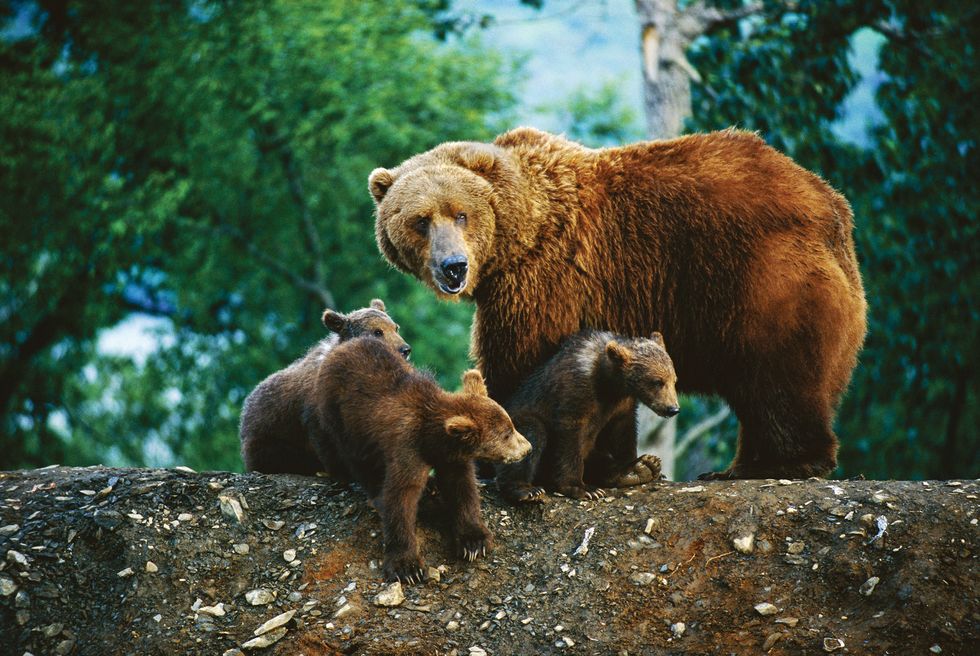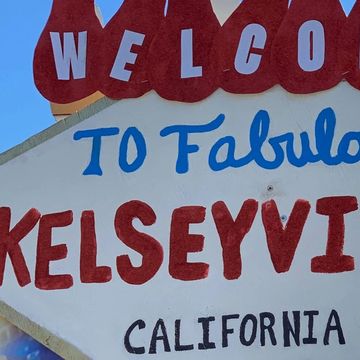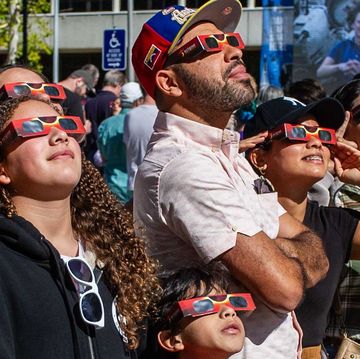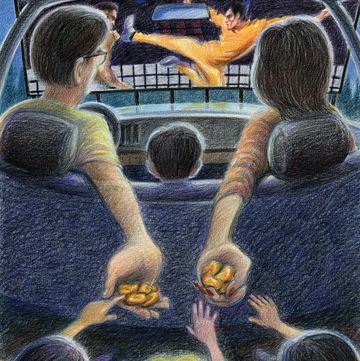About 10 months back, Alaska Department of Fish and Game workers were ordered to conduct an aerial hunt and kill all the bears and wolves they saw from their helicopters. A total of 94 brown bears (including mothers and 11 cubs), five black bears, and five wolves were fatally shot from the air between May 10 and June 4 of last year, according to a New York Times op-ed by Jon Waterman, a former ranger at Denali National Park and Preserve.
This slaughter was ordered by the Alaska Board of Game, a governor-appointed seven-person group composed of trophy hunters, trappers, guides, and fishers, but no scientists. The board’s desire was to protect game animals, especially caribou and their calves, from predators. Of particular concern was southwest Alaska’s Mulchatna caribou herd, which had been closed to hunting since fall 2021. The herd had peaked at approximately 200,000 animals in 1997 and had since declined drastically to just over 12,000.
The board suspected predators, but as Waterman wrote, state wildlife biologists presented evidence that Alaska’s predator-control program of killing wolves over the past 12 years had been ineffective in increasing the caribou herd. The causes of the decline, rather than wolves, were legal overhunting, illegal poaching, climate change–inflicted habitat loss, overgrazing, and disease. But the board ignored this data, voting to extend the wolf-control program and adding bears to the hit list. This decision was made without public comment and without adequate science.
A state biologist had wrongly predicted that fewer than 25 grizzlies (Alaskan brown bears and grizzlies are the same subspecies) would be killed in the aerial hunt. The fact that the State of Alaska allowed that number to swell nearly fourfold as more than 100 animals were mowed down in just 17 working days shows how easily predator hunts can spiral out of control.
Response to the carnage was swift and strong. In mid-June, the Anchorage Daily News carried this opinion: “Alaska’s Bear Slaughter Is Disgusting, Heartbreaking.” A couple of months later, the New York Times published Waterman’s op-ed: “Alaska’s Slaughter of Bears Must Stop.” He argued that the massacre was “a foolish and hapless effort to protect [by killing the bears] what is left of the plummeting numbers of the Mulchatna caribou herd.”
We in America are hell on predators. There’s plenty of support for predator control among moose and caribou hunters in Alaska, as well as among trappers and trophy hunters in Montana. That’s because so many people still believe that dead coyotes and wolves mean more deer and elk for hunters. The Alaska Department of Fish and Game asserts on its website that “predators often kill more than 80 percent of the moose and caribou that die during an average year, while humans take less than 10 percent.” This statement is more than questionable, and it and similar statistics are hotly debated among wildlife managers and biologists throughout the world.
The predator-killing argument is an ancient one. In the Anchorage Daily News op-ed following last spring’s hunt, nature writer and author Bill Sherwonit argued that “this regressive, brutal, and inhumane management style hearkens back to 19th and early 20th-century strategies when bears and wolves were widely considered vermin, and many people believed ‘the only good bear is a dead bear.’ ”
Sherwonit went on to say, “The state’s advisory announcement also gives a sanitized version of the operation, providing numbers and other data and nothing of the killing itself, the terror of the animals being chased down by helicopters, their pain and suffering, particularly those not immediately killed by their wounds, the killing of parents and cubs. To be out there in that killing field: Well, it must have been a barbaric and appalling thing to witness. War indeed seems an appropriate analogy.”
That grabbed my attention. The fact is, they shot every single bear and wolf they spotted from the choppers. I thought about how it would have been for those grizzly families. The hunters would have shot the mother bears first. Some cubs would have made easy targets as they clung to their dead mothers. Others might have been wounded and finished off as the choppers closed in on them. Still other cubs must have scattered, running for their lives. The helicopters would have dropped lower to hound these little bears out of the brush or down the ravines, where they could be dispatched.
There’s nothing quite so terrifying as running from a low-flying helicopter that is on your ass, trying to kill you. I had my death-from-above moment with friendly fire in the wild Central Highlands of Vietnam, compliments of the 101st Airborne. A helicopter chased me onto a bare ridgetop, firing M60 machine gun bullets after me, then dropped a tracer round between my legs as I dove into the brush. Later that night, as I squatted with my Montagnard comrades in a Vietcong foxhole and listened for mortar fire, I shook uncontrollably for many minutes. That had never happened to me before.
The same year that I got out of Vietnam—1968—I ran into grizzlies in Yellowstone and became a partisan for them. For the next couple of decades, I lived alone with grizzlies, filming them in the wilderness. A half century later, I still live in grizzly country. The fat handful of books I’ve written celebrate the joy and value of sharing the landscape with a creature who, if it chooses to, can kill and eat you (though they seldom do).
In the aftermath of the butchery in Alaska, ex-governor Tony Knowles told the New York Times that he hoped people would learn from it: “This…massacre is not just an Alaskan issue of people shooting from a plane. They killed 94 brown bears without any scientific support.… This hopefully will be a shock wave that will cause a new look all over America on how we handle our wildlife.” I couldn’t agree more.
Montana, where I live, has the largest grizzly population in the Lower 48. Very rough estimates count 30,000 grizzlies in Alaska; 1,800 in Montana, Wyoming, and Idaho, the bulk of them in Montana; and a few in Washington State. Most of these bears intermix. And Montana is where wildlife officials are planning a “grizzly bear management” program. But first, they need the federal government to end grizzlies’ protection under the Endangered Species Act. This is called delisting.
For now, grizzly bears in Montana (and throughout the Lower 48) are covered by the ESA as a threatened species. That means the U.S. Fish and Wildlife Service (FWS) is in charge of managing their populations. State fish and game agencies cannot legally kill (or “take”) a grizzly south of Canada without permission from the feds. But this tier of power could shift and vanish any day, as efforts to delist grizzlies and states’ rights issues meld. My fear is that if ESA protections are removed, a trophy hunt will inevitably be launched and Montana will enact an Alaska-style predator slaughter.
This is a very possible outcome. For one thing, grizzly bears are easy to shoot. During the course of two decades in the wilderness of Wyoming and Montana, while carrying camping gear and 16-millimeter movie equipment, I managed to sneak within about 100 yards of at least 200 wild grizzlies in and around Yellowstone and Glacier National Parks. There is a public record of my sightings; almost all those bears were captured on film, which is now archived at Texas Tech University.
I’d like to say something else about killing bears: As someone who hunts, I don’t think dispatching brown bears with a weapon capable of bringing down a B-52 is very challenging. In fact, because I could have shot any of those 200 bears, I have always suspected that grizzlies are easy to hunt. Easy, say, compared with black bears, who are spooky forest creatures and a test for a fair chase (no baits, helicopters, or dogs) hunter. Grizzlies, by contrast, are open-country animals, and their dominance at the top of the food chain means they don’t automatically run away.
Enter Greg Gianforte: You may recall the headlines about him assaulting a journalist during the 2017 special election for Montana’s sole U.S. House of Representatives seat. After winning the governorship three years later, Gianforte was characterized by Rolling Stone as “a Trumpist Republican…a wealthy creationist, best known for body slamming a reporter on the eve of his election.… And he’d just shot a collared Yellowstone wolf to show he would do what he pleased on the hunting issue, research and rules be damned.”
That particular wolf was caught in a leg trap on a ranch 12 miles up the Yellowstone River from my house, just north of Yellowstone National Park. I heard about it from neighbors. We don’t know how long the wolf was left suffering in the trap, possibly overnight. Although the incident was widely reported in the news, there were no eyewitnesses. The ranch manager, neighbor Matt Lumley, who is also the president of the Montana Trappers Association, caught the wolf and called up Governor Gianforte, who shot it in the trap. Lumley and Gianforte apparently had an arrangement. According to the Washington Post, in 2022, on the same ranch, Lumley crossed a mountain lion’s tracks on the snow, got the dogs out, and treed the animal; he notified the governor, who came over and shot the lion out of the tree. (Gianforte’s press secretary disputed that account, saying that the governor was present when the mountain lion was treed.)
Gianforte was voted into office two years before like-minded Republican supermajorities in Montana’s Senate and House of Representatives. Collectively, these politicians dislike wolves and bears and have passed bills that make it easier to get rid of them. Wolves in Montana were delisted from the ESA in 2011, and trapping them was authorized the following year. Since then, an average of 245 wolves have been legally killed annually. That’s more than 2,000 dead wolves.
For Montana’s Fish, Wildlife and Parks agency, the grizzly population presents different management problems than wolves do. Bears don’t run in packs and have a vastly slower reproductive rate, the lowest of any land mammal in North America (musk oxen and polar bears are close). Wolves, like dogs, birth sizable litters at frequent intervals. Female grizzlies don’t breed until they’re about five years old, and they keep an average of two cubs with them to teach and protect for another two years. Add to that the isolation of populations like the one in and around Yellowstone, which suffers from lack of connectivity and perhaps genetic diversity.
So, if you think we have too many grizzlies—as those in Alaska did last spring, or as many in the Lower 48 did at the turn of the 19th century—and you don’t want to rely on poison, giant traps, or set guns to reduce the population, your options are limited.
Counting grizzlies has been a cottage industry in Montana, Wyoming, and Idaho for decades; yet none of the resulting numbers pass rigorous scientific scrutiny. The Greater Yellowstone Ecosystem population is estimated at about 700 to nearly 1,100, with that extra 300 to 400 bears added after a recalculation of a mathematical formula. The count is important because the FWS has used it twice in the past two decades to justify delisting the Yellowstone grizzly population, as a prelude to trophy hunting. Both attempts were rejected in federal court. My conservation group, Save the Yellowstone Grizzly, filed an amicus brief during the second lawsuit to force consideration of climate change when determining the future status of grizzlies in the contiguous states; the FWS has so far discounted this existential threat. Federal courts have affirmed that habitat quality and connectivity between different population segments are at least as important as population size when making a decision on whether to delist.
This article appears in Issue 26 of Alta Journal.
SUBSCRIBE
Two years ago, Gianforte announced that Montana was petitioning the FWS to remove ESA protections for grizzly bears in the Northern Continental Divide Ecosystem, an area encompassing Glacier National Park and the Bob Marshall Wilderness Complex. A month later, Wyoming made the same request of FWS for the Yellowstone population. These pending petitions are due to be decided beginning in February.
If the delisting efforts are successful, two Montana laws will go into effect. A 2021 measure specifies that a person can shoot a grizzly bear if it is “threatening to kill a person or livestock,” which is a recipe for a likely repeat of the Alaska massacre, because “threatening” is not defined. A second law prohibits Fish, Wildlife and Parks from relocating grizzlies captured during any type of conflict occurring outside of a federal recovery zone. This law will effectively eliminate the possibility for mixing—needed for genetic diversity—between populations like those around Glacier and Yellowstone National Parks, making true recovery impossible for Yellowstone’s isolated bears.
Delisting will make trophy hunting a foregone conclusion in Montana. The Alaska massacre teaches how easily a state can lose 100 bears. I don’t think the Yellowstone grizzly population can survive such intensive killing.
Keeping Yellowstone’s population of grizzlies healthy also allows for their possible reintroduction to another state or area, namely California. Of course, the grizzly has been missing from California for nearly 100 years.
Last spring, Alta Journal 23 contained an article, by associate editor Ajay Orona, on restoring the grizzly bear to the Golden State. It featured the efforts of the California Grizzly Research Network, a multidisciplinary group of scholars and scientists out of UC Santa Barbara. They are looking at suitable reintroduction sites and food systems and are planning to conclude their work in 2025. The group is optimistic that grizzly bears could be brought back. The team leader, Professor Peter Alagona, describes grizzlies as “the Swiss Army knives of bears. Drop them off in most environments and they’ll survive. The bigger question is whether or not people will tolerate them.”
As we’ve seen in Alaska, human tolerance can swing either way. I’m hopeful that the citizens’ embrace of wildlife in California will spread to Montana—and, by extension, Wyoming and Idaho. The federal government must not delist the grizzlies in those states. Any discussion of using the Yellowstone bears as transplants to California is moot if they’re being decimated. The future of grizzlies everywhere will be in jeopardy if Gianforte and the trophy hunters get their way. •
Author, disabled veteran, filmmaker, and naturalist Doug Peacock is the founder and president of Save the Yellowstone Grizzly. Peacock was a Green Beret medic in Vietnam and the real-life model for Edward Abbey’s George Washington Hayduke in The Monkey Wrench Gang.













